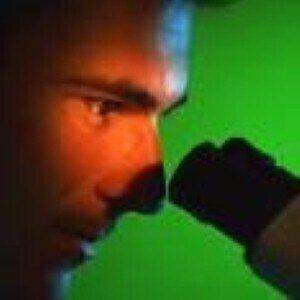Microscopy & Microtechniques
Laser Tweezers to Lead to Faster Breakthroughs in Biological Research
Jul 06 2013
A novel process for selecting and examining protein microcrystals, which can be essential for understanding biological functions, is expected to save precious research days and resources and lead to faster breakthroughs in healthcare. Protein microcrystals enable researchers to analyse the structure of molecules and how they behave, for example in disease, but can take a long time to prepare and analyse. A new process for using laser ‘tweezers’ developed at the Rutherford Appleton Laboratory will help streamline crystal selection. The results are published in Acta Crystallographica D this week.
The technique allows researchers to select and place microscopic protein crystals on customised sample holders for crystallographic analysis on one of structural biology beamlines at Diamond Light Source, the UK’s national synchrotron science facility. Studying protein crystals through X-ray crystallography enables researchers to understand the structure and function of a molecule.
The new technique is the result of a cross-campus collaboration between Diamond Light Source and STFC’s Central Laser Facility (CLF) and Technology departments. In this area of research, crystals of proteins rather than single molecules must be used, but for many proteins, the crystals formed can be so small (less than 10 microns) that they are very difficult to handle and mount onto standard sample holders for analysis. This can lead to some potentially vital crystals being discarded. STFC’s Technology Department helped to overcome this problem by weaving a microfiber web to create a ‘net’ for the crystals to be mounted on. A laser is then used to grab the minute crystals and move them onto the novel sample holders in the process of laser tweezing.
By using lasers to precisely place these crystals in position, scientists are able to know where to focus the X-ray beam to look at the protein microcrystals. Previously, researchers had had to ‘fish’ through the sample to load crystals. During this process it was not possible to select and mount individual crystals; it was more of a random approach and needed a significant amount of time to optimise the conditions during the mounting process. Additionally, more time for screening was needed to make sure that the best crystals, e.g. the largest ones, were successfully transferred to the beamline. The use of laser tweezers to streamline the process means precious research days and resources can be saved.
Armin Wagner, project lead at Diamond Light Source, explains why this technique is so important: “Previously we have, in essence, wasted two to three days on the beamline just looking for our best crystals. Now, using the laser tweezers system, we can visually identify and select specific crystals and transfer them to well defined positions on a sample mount rather than relying on a purely random process. Microcrystal work is essential for research in many areas and this collaborative, cross-campus project is addressing problems with crystal supply to allow more efficient research.”
Andy Ward at the Central Laser Facility said: “This is a great example of how scientists from different facilities at the Rutherford Appleton Laboratory collaborate to address challenging problems. It’s clearly a benefit to have them all on one site here at the Harwell campus.”
Digital Edition
Lab Asia 31.2 April 2024
April 2024
In This Edition Chromatography Articles - Approaches to troubleshooting an SPE method for the analysis of oligonucleotides (pt i) - High-precision liquid flow processes demand full fluidic c...
View all digital editions
Events
Apr 24 2024 Jakarta, Indonesia
Apr 25 2024 Istanbul, Turkey
Apr 28 2024 Montreal, Quebec, Canada
May 05 2024 Seville, Spain
InformEx Zone at CPhl North America
May 07 2024 Pennsylvania, PA, USA


















